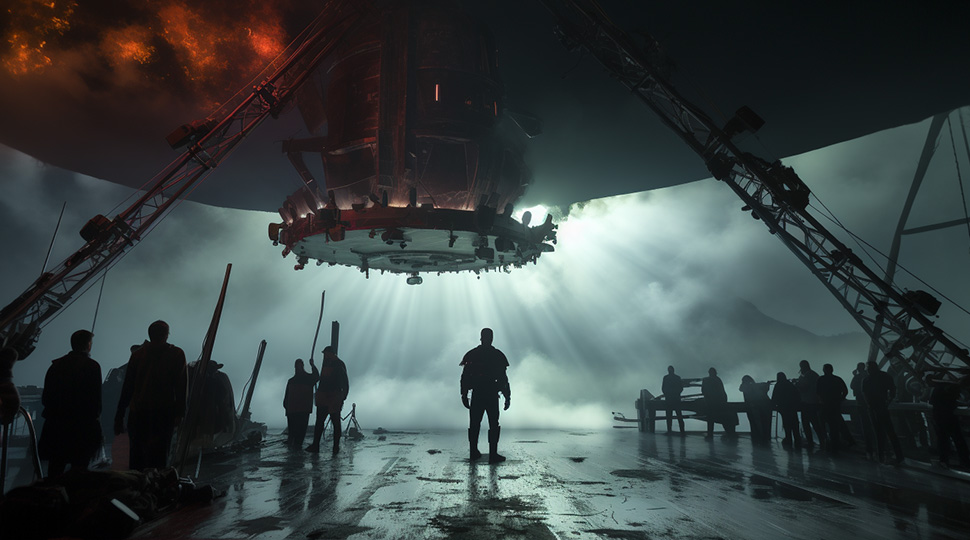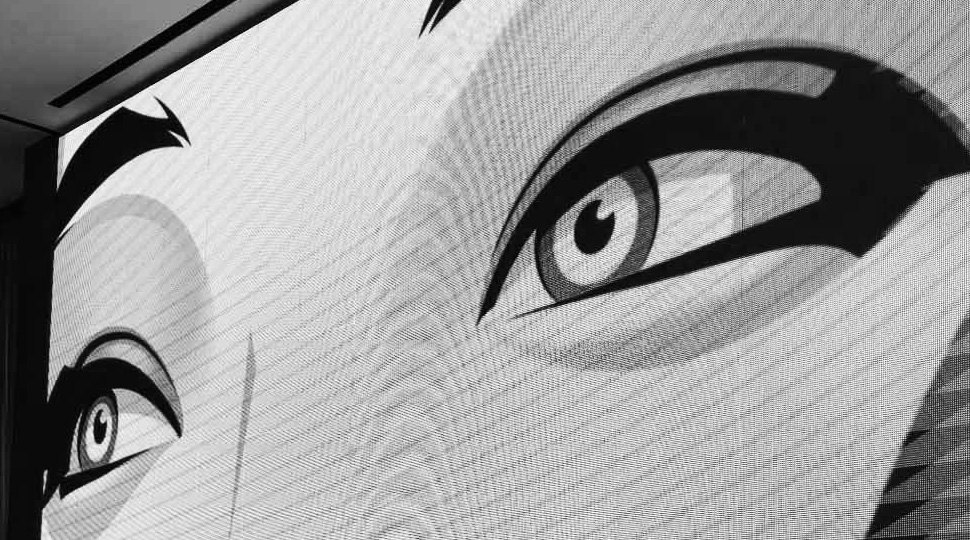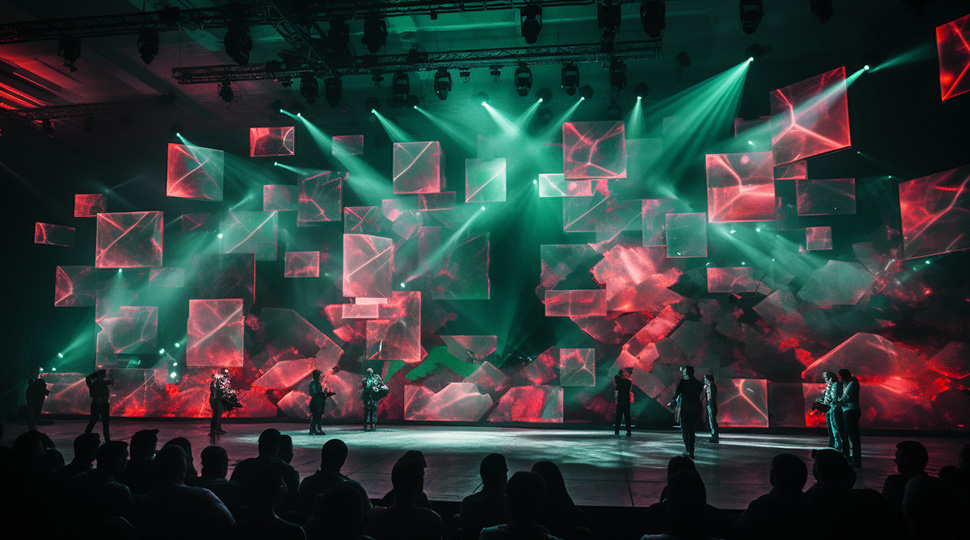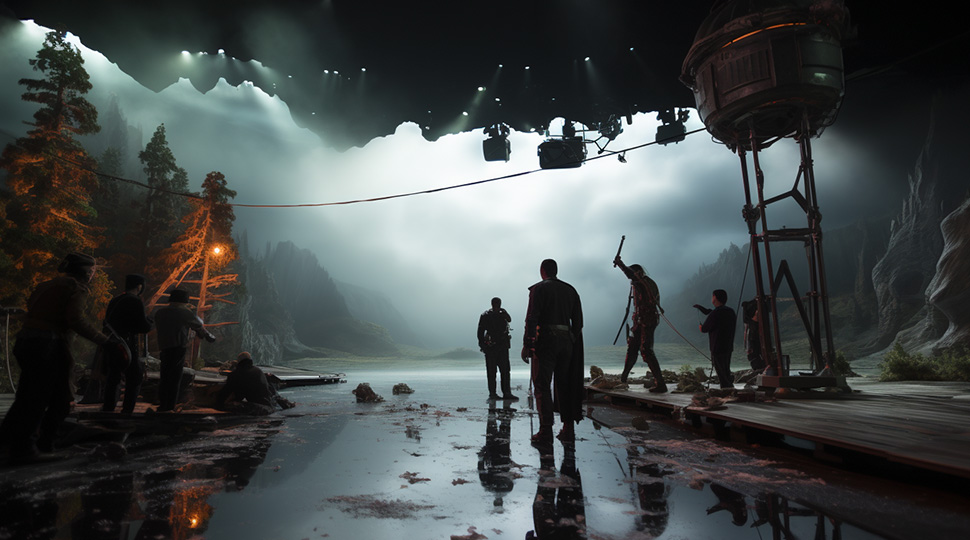Ever wondered how modern filmmakers create those breathtakingly realistic scenes without ever leaving the studio? There’s a new game-changer in the world of video production: LED walls. Green screens are old news; it’s time for the LED screen and the versatility and realism it brings.
In this guide, we’ll be delving into just what these walls are, how they improve video production, and how you can harness their power to elevate your own production. So, whether you’re a filmmaker or just fascinated by this new technology, be sure to read on!
What Are LED Walls?
You’re probably familiar with the regular LED light bulbs we see in buildings everywhere. Well, this is a little different.
LED walls, often termed video walls or LED displays, are large-scale visual solutions made up of individual LED panels or modules seamlessly tiled together. Unlike traditional projectors or screens, LED walls emit their own light, making them notably bright and vibrant. These combined can produce high-resolution imagery, and their modular nature means they can be configured in all types of sizes and shapes.
Why Switch To LED Walls?
When you think of creating a custom background, your mind would likely immediately bring up green screens. So if green screens can be used, why use LED walls? Well, there are a number of benefits that LED walls have over green screens.
Lighting The Scene
One of the biggest differences between green screens and LED walls is that the latter emits its own light. And if you know anything about video production, you know that lighting is paramount – it sculpts the scene and controls the emotions evoked. LED walls are a uniquely ingenious tool in this craft, offering a two-fold advantage. First, they act as massive light sources, casting ambient and scene-specific illumination that interacts authentically with actors and set pieces.

This means the soft glow of a digital sunrise or the dynamic flicker of a virtual cityscape can be reflected accurately on the characters without looking out of place. Secondly, the consistency and controllability of LED walls mean that you don’t need multiple light fixtures and constant adjustments. It’s consistent, adaptable, and reduces setup times and challenges. In essence, LED walls give immersive lighting that you have complete control over, and that is simply not something you can get with a green screen.
Changing The Backdrop
Getting a shot in an interesting location can get expensive really fast. Between renting a location to shoot at and building massive, realistic sets, the cost adds up. And if you need to shoot in more than one place? That’s an immediate hole in your budget. That isn’t an issue with LED walls. With the high-resolution screens, you’re able to project any sort of backdrop you want and change them in real time. No logistics or additional cost required.
Real-Time Changes
Now, we all know that backdrop changes can be done with green screens too. The difference is that while you only get to see the full image in post-production when you’re using green screens, with LED walls, it’s an instant change. The benefits of this are numerous.
Think of actors immersing themselves in a scene instantly, without having to imagine the backdrop. Picture directors getting real-time visual feedback without the waiting game. And say goodbye to lengthy post-production hours and its hefty costs.
LED Wall Tips
Now, if you’re reading this article, you’re likely not that familiar with how LED walls work yet. We’re here to help! Here are some important things to look out for when shooting videos with LED screens.
Calibration is Key
To truly harness the visual power of an LED wall, regular calibration is absolutely necessary. With calibration, you can ensure colour accuracy and maintain a consistent display across every individual panel. This keeps your visuals captivating while also faithful to the original vision, exuding vibrancy and authenticity at every glance.
Match The Screen With Reality
The point of using LED walls to create custom backgrounds is to keep things looking real. To do that, you’ll need to make sure you’re blending the real elements on set with what’s on the screen. For instance, if an actor is meant to touch a digital table, having a real table in the same spot helps it look and feel right.
It’s also important to ensure that the lighting from the LED wall matches the real set. By carefully syncing the real props with the digital images, you can make it so audiences can’t tell what’s real from what’s projected, making the whole experience more believable and enjoyable.
Guard Against Moiré Patterns
If you’ve ever had to take a photo of something on your screen, you’ve probably noticed those weird lines appearing in the shot. Filming an LED wall can be a treat, but moiré patterns are something that you have to account for when using them.

Credit: Snadisplays.com
The key to addressing this issue is adjusting your camera positioning. Change the angle relationship or focal length to find the sweet spot where the patterns disappear and you’re good to go. Adding some seamless diffusion panels right in front of the screens can also help.
Keep The Seam Line Out Of Sight
The illusion of realism is everything in video production and one that can be easily broken if the audience sees a hard line between an LED wall and the floor, also known as the seamline. This is an unavoidable part of using LED walls due to the way that the screens are set up.

To overcome this challenge, consider using a curved or “infinity” floor that seamlessly extends to meet the wall, blurring the boundaries between vertical and horizontal surfaces. You can also use careful lighting techniques, strategic placement of design elements like props to hide the line, and camera positioning.
Final Shot
Video production is always tricky, especially with more abstract concepts and settings involved. With LED walls, these issues become easily fixable. Just remember, when using LED walls in video setups, it’s the little things that can make a big difference. An obvious seam line or moire pattern and the illusion is broken.
But just by positioning props and lighting smartly, you can keep the benefits without bringing attention to the screen.


